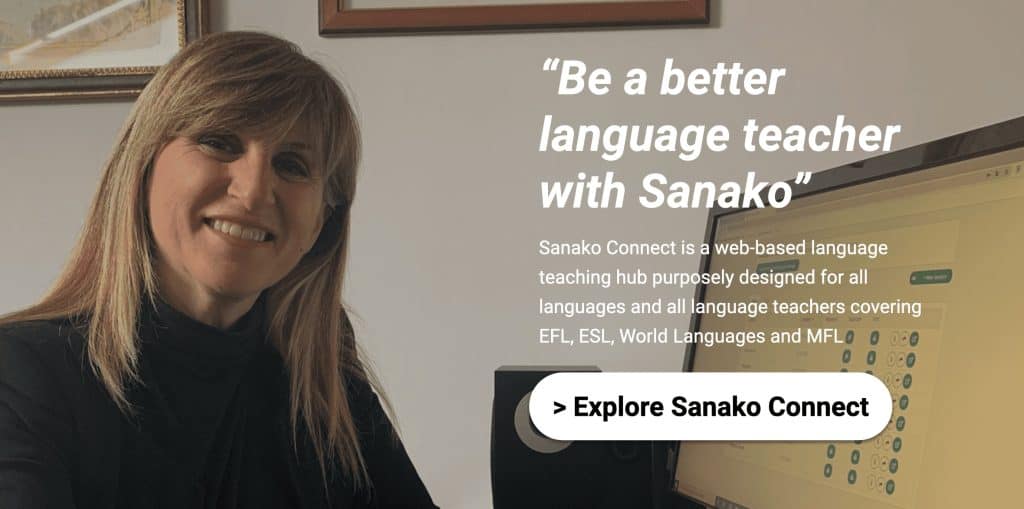One of the most common misconceptions in language education is that the teacher is the only facilitator of learning and the fount of all knowledge. Yet there’s one other vital (and often underused) resource that learners and educators can call on – other students in the classroom.
In particular, peers can play a key role in supporting their colleagues to develop and improve through peer-to-peer feedback. This support can play a vital role in evaluating work and in providing constructive criticism as well as outlining suggestions for improvement and praise to their peers.
This blog post looks specifically at peer-to-peer feedback and outlines how you could implement it in your language classroom. Please see also our earlier post looking at the importance of feedback for language learners.
What is peer-to-peer feedback?
This term commonly refers to the process of students providing feedback to their classmates on their academic work, projects, presentations, or any other learning activities.
Peer-to-peer feedback is usually delivered in written or spoken form and typically occurs in pairs or small groups (Liu & Hansen, 2002). In some education systems, peer feedback is a key element of best pedagogical practice. The Swedish National Agency for Education, for example, is clear on its role: “The aim of peer feedback is to activate learners as resources to one another to improve their individual performance by providing and receiving feedback.”
According to Berggren’s 2019 research, the core purpose of implementing peer feedback in a classroom environment is not only to evaluate and promote the recipient’s learning but also to evaluate and promote one’s own learning as well. Black & Wiliam (2009) go further arguing that peer feedback enables learners to “give and receive feedback of different character than the one given by the teacher.”
Peer feedback is also variously referred to as ‘peer review’ and ‘peer assessment.’
What’s the rationale for peer-to-peer feedback?
More broadly, peer-to-peer feedback in the classroom serves several purposes:
- Learning and improvement: It helps students identify strengths and weaknesses in their own work by observing and analysing the work of others. It also provides an opportunity for students to learn different perspectives and approaches.
- Collaboration and communication skills: Providing feedback to peers helps pupils to communicate effectively, expressing their thoughts and justifying their opinions. It also promotes collaboration when students discuss and exchange ideas.
- Empowerment and ownership: Peer feedback empowers students to take ownership of their learning. By actively participating in the feedback process, students become more responsible for their own progress and development.
- Reflective practice: Giving and receiving feedback requires students to reflect on their own work. It develops the ability to critically analyse their language output, encouraging self-reflection and self-assessment.
Is there any evidence of impact?
Peer feedback has received extensive research attention, although there’s limited specific insight relating to language learning.
Research conducted by Sebba et al in 2008 explored the impact of peer assessment on students’ learning and attainment in science education. The study found that using peer feedback techniques had a positive impact on students’ academic achievement. It allowed students to identify their strengths and areas for improvement, leading to enhanced learning outcomes. It also contributed to improving students’ critical thinking, communication, and reflective skills.
How can educators deploy peer-to-peer feedback in their classroom?
Before making a start, it’s essential to explain the peer feedback process to students and to provide clear guidelines on what is involved. A key part of this is creating a classroom culture where students feel comfortable giving / receiving feedback and where they appreciate the importance of respectful and constructive communication. Clear guidelines are therefore essential, so encourage them to focus on specific aspects of language learning (grammar, vocabulary, pronunciation, etc.) or ask them to provide feedback in a specific format (written comments, oral discussions, etc.).
From our review of effective implementation of peer feedback in language classrooms, we’ve identified the following six key must-do’s.
- Model effective feedback: As an educator, you play a crucial role in modelling high-quality feedback. Take the time to demonstrate how to provide specific and actionable feedback by using examples and providing explanations. And when feeding back to students yourself, give them a masterclass in how to comment constructively on their accuracy, fluency and pronunciation.
- Scaffold the feedback process: Many smaller steps can be the best way to embed peer feedback in your classroom. So why not start with structured feedback activities and provide clear guidelines and templates? Give students a feedback form, for example, with questions to ask and things for them to look out for. They’ll quickly get the hang of what they need to ask / do and you can then reduce the scaffolding as they become more comfortable.
- Encourage active listening: When students are providing feedback to their peers, support them to actively listen to what their partner is saying, so that the exercise becomes a conversation rather than a stilted Q+A session. By doing so, students are able to develop their listening and comprehension skills and also have the opportunity to build their spoken language skills at the same time. You can check out our dedicated post on how to build your students’ active listening skills here.
- Take time to reflect: After giving feedback, students should be encouraged to think about the feedback they have given and received. Was there a different (better?) way to approach the exercise? Did they pick up any new phrases or words that they could use in the future or which they needed to check for meaning or spelling? This all helps them to build their critical thinking skills and to develop a deeper understanding of the language.
- Rotate roles and pairings: As with any classroom exercise, it’s important to rotate the roles of the feedback giver and receiver so that all students have a chance to practise both skills. Think also about which students are paired together and carefully consider their proficiency levels and learning styles. Pairing stronger students with weaker ones can create a supportive learning dynamic where more advanced learners can provide excellent guidance and support.
- Use educational technology: Online platforms or tools (such as Sanako Connect) can help make the feedback process seamless and easy to deliver, particularly if your students are working at a distance from your institution. Such tools allow students to submit their work (written or spoken), receive feedback and engage in online discussions in either text-based or spoken form.
Encouraging peer-to-peer feedback in the language classroom helps cultivate an environment of active engagement, collaboration and continuous improvement. By establishing a positive feedback culture, educators can also empower students to become more active participants in their language learning journey. So why not unleash your classroom’s hidden learning resource today?
If you’d like to find out more about how Sanako Connect could help to transform your approach to delivering high-quality feedback, please click here or the banner below to learn more and to arrange your FREE demo!

